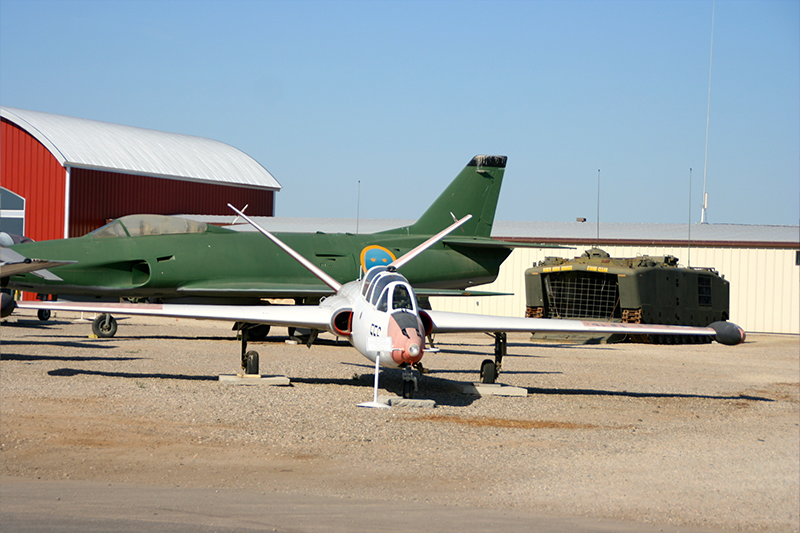Specifications
| Manufacturer: | Fouga | |
|---|---|---|
| Year/Model: | 1966 CM170 Magister, Dinky Toy, Tzukit, Snunit | |
| S/N: | ||
| Tail Number: | 451FM | |
| Power Plant: | Two 882 pound thrust Turbomeca Marbore IIA turbojets | |
| Wingspan: | 39 feet 10 inches | |
| Length: | 33 feet 0 inches | |
| Height: | 9 feet 2 inches | |
| Empty Weight: | 4,740 pounds | |
| Maximum Speed: | 444 mph @ 30,000 ft | |
| Maximum Range: | 575 statute miles | |
| Service Ceiling: | 36,080 feet | |
| Crew: | 2 | |
| Status: | Static Display | |
| Owner: | Estrella Warbirds Museum | |
CM-170 in Flight
History
In 1958, the parent company (Fouga) was acquired by the Potez company, then by Sud-Aviation in 1967, and finally by Aérospatiale. The Magister was also built under license in several other nations, including Germany (by Messerschmitt), Finland (by Valmet), and Israel. Israeli Aircraft Industries' version was initially nicknamed the Snunit ("Swallow") but this name never caught on and the airplane was later called the "Tzukit" ("Thrush") after an upgrade program in 1983. Israel also called it the AMIT (Advanced Multi-mission Improved trainer).
In addition, many nations purchased Magisters for trainer and light-attack duties. In the latter role, the aircraft could be fitted with two 7.5-mm or 7.62-mm machine guns in the nose, several combinations of underwing rocket pods or freefall bombs, and even Nord AS.11 air-to-surface missiles. Israel proved the Magister's combat worth during the Six Day War in June 1967, when the Magister flew ground attack missions in Egypt and Jordan.
The Magister design did not change much throughout its production life. The most significant upgrade, the CM-170-2, was fitted with Turbomecca Marbore VI engines, which gave the airplane a 350-pound increase in thrust over the earlier Marbore IIs, resulting in a higher useful load and greater climb rate. The more powerful engines were also used in the CM-170-3 Super Magister, operated by the Irish Air Corps as a light attack/trainer well into the 1990s.
After France began retiring their Magisters in the 1980s, private warbird collectors began acquiring them, and today, over 50 of them are on the civil rosters in the USA, New Zealand and England. Ironically, due to French restrictions on Magisters being registered as a civil aircraft, only a few are flown in the aircraft's original homeland.
One of the best-handling jet trainers ever built, the Fouga is and will continue to be treasured for its straightforward flight characteristics and twin-engine safety.
This particular Fouga Magister was a frequent flyer in and out of the San Louis Obispo Airport until reaching its end of life when it was donated to the Estrella Warbirds Museum, by Blythe Montanaro, in memory of her late husband.
>Nicknames
The Whistling Turtle (Belgian Air Force nickname); Dinky Toy. Israeli Air Force designations included: Tzukit ("Thrush"), Snunit ("Swallow").











